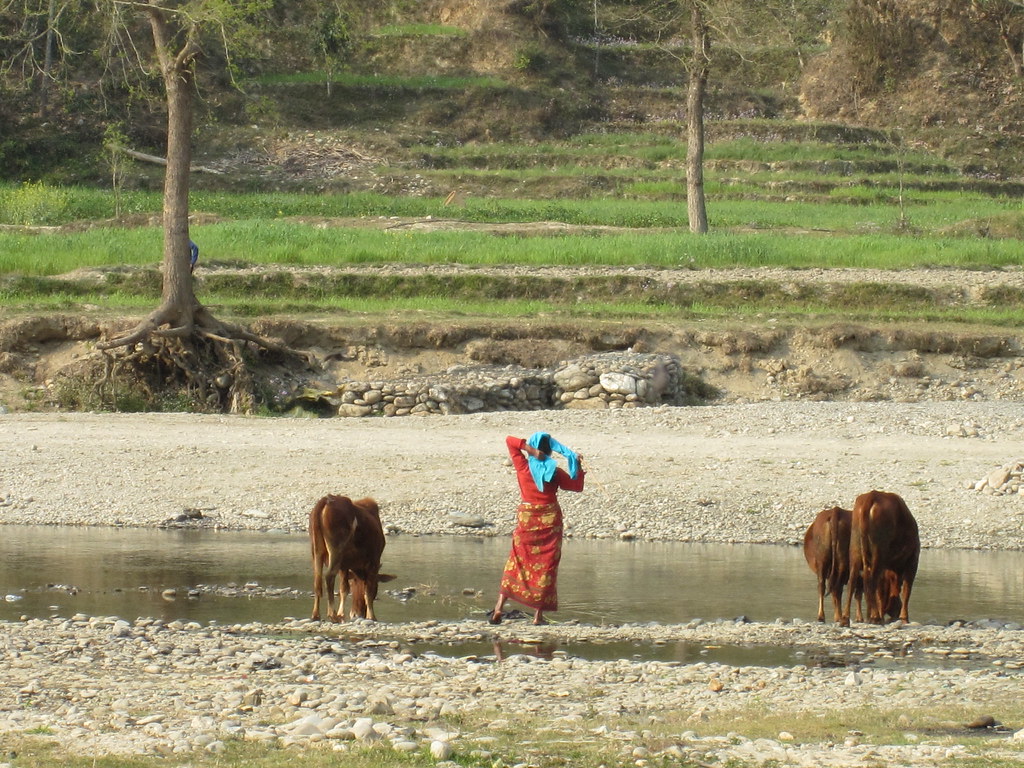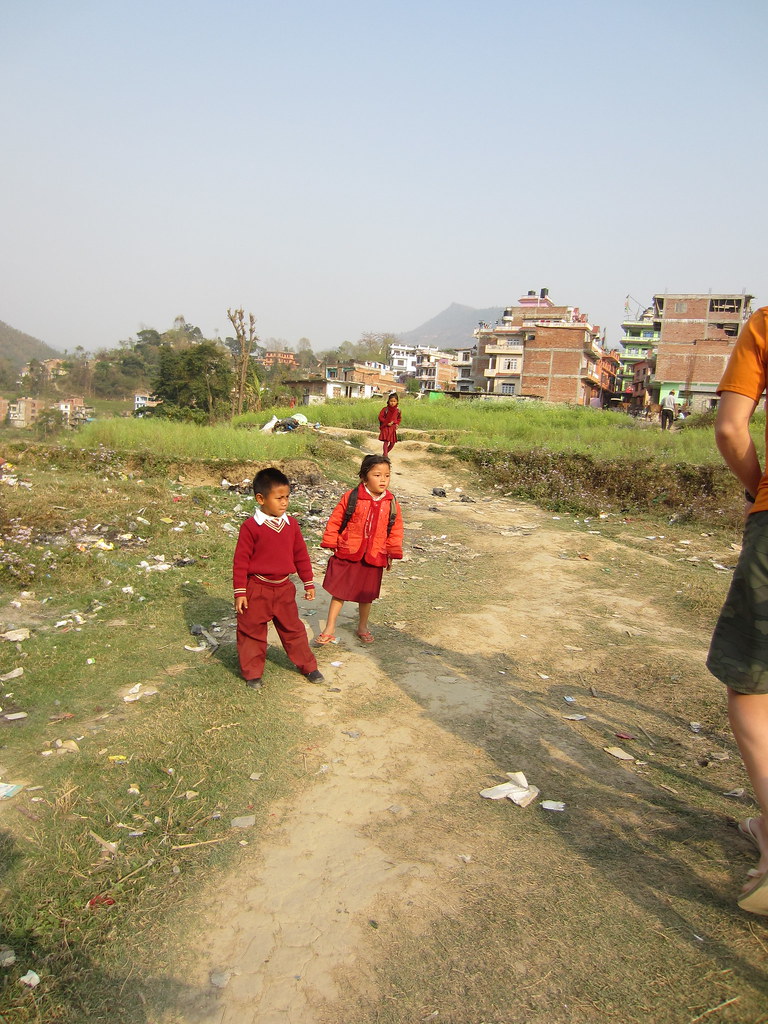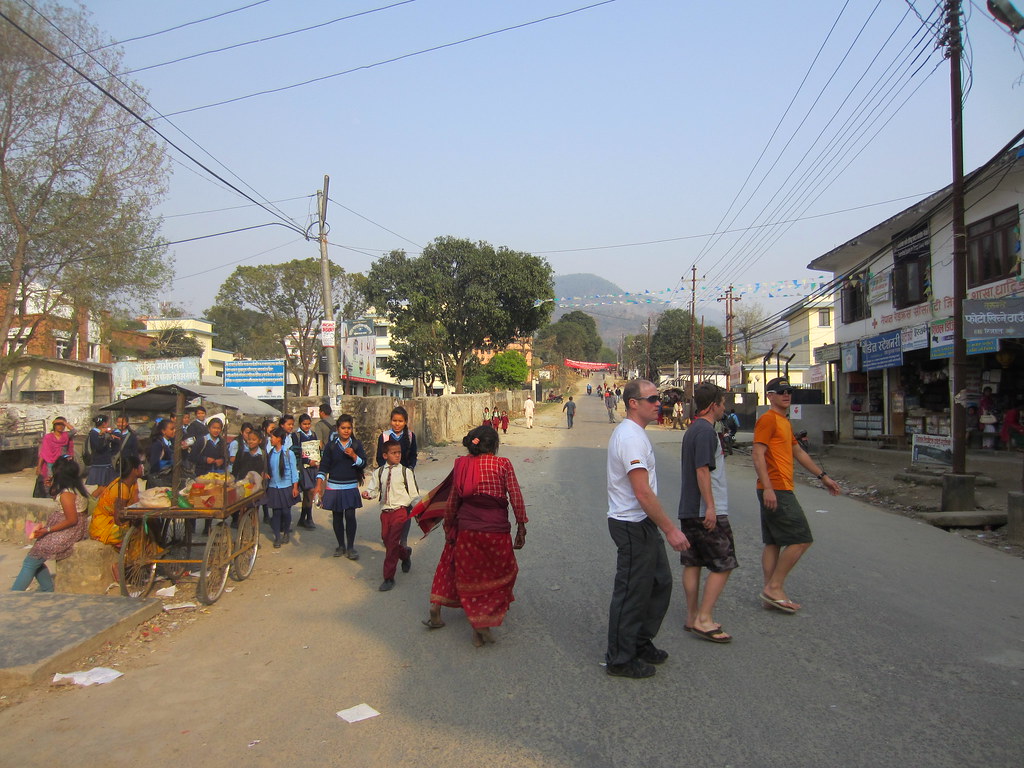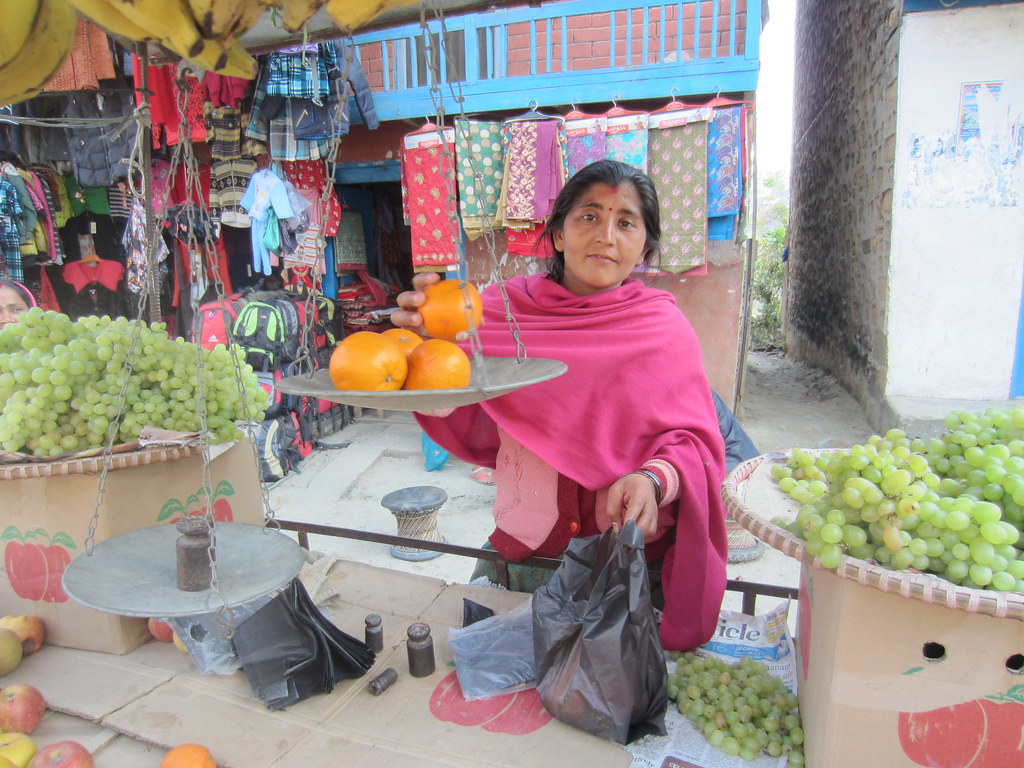It feels trivial to write about how each stage went down in the race, so I’ll keep them brief. I wrote in a journal every day, so most of the text are excerpts directly from there. The later stages are the more interesting ones!
Read Sonya’s Yak Attack Sage 1 race report
Stage 2: Nuwakot – Dhading 29 mi, 5500′ of climbing
After a delicious breakfast, we left the Famous Farm in Nuwakot and started toward Dhading, the lowest point of the race(2000′). It was hard to imagine that in 7 stages, we’d be almost 16,000′ higher in elevation. We had to wait about 20 minutes to start. They had to put up the start banner! We were told that the first climb was 12km and rough. I managed to dangle off the back of the lead group and definitely started too fast. The climb was brutal and hot, and you could see people up ahead on the switchbacks making it hurt even more. The first descent was rocky and I was once again beat up on my 26 inch hardtail. Again, I told myself it’d all be worth it when I had to carry it. I rode stronger for the undulating (the whole race was UNDULATING!) portion and last climb.
I had to dodge goats, chickens, old women carrying baskets, buses, dogs, and kids.
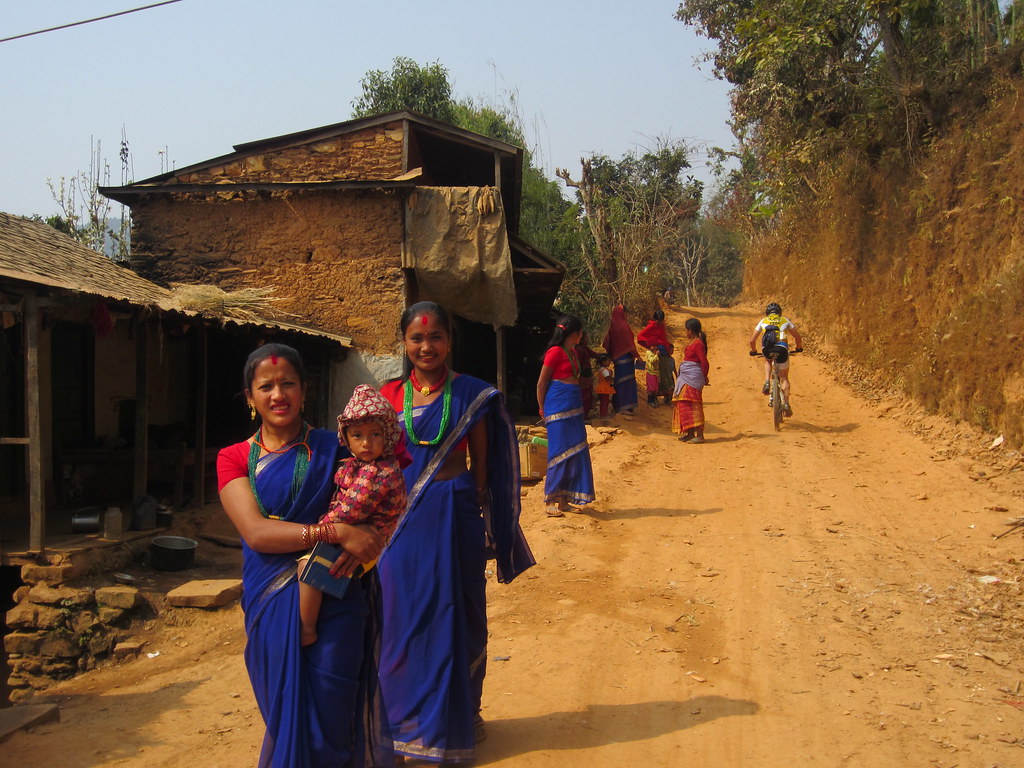
Took this shot while riding through a town.
The weather was hot and we were still below 3000′. I was dying to catch a glimpse of the mountains, but had to practice patience. We’d get there eventually. We had chow mein for lunch and washed our bikes in the river.
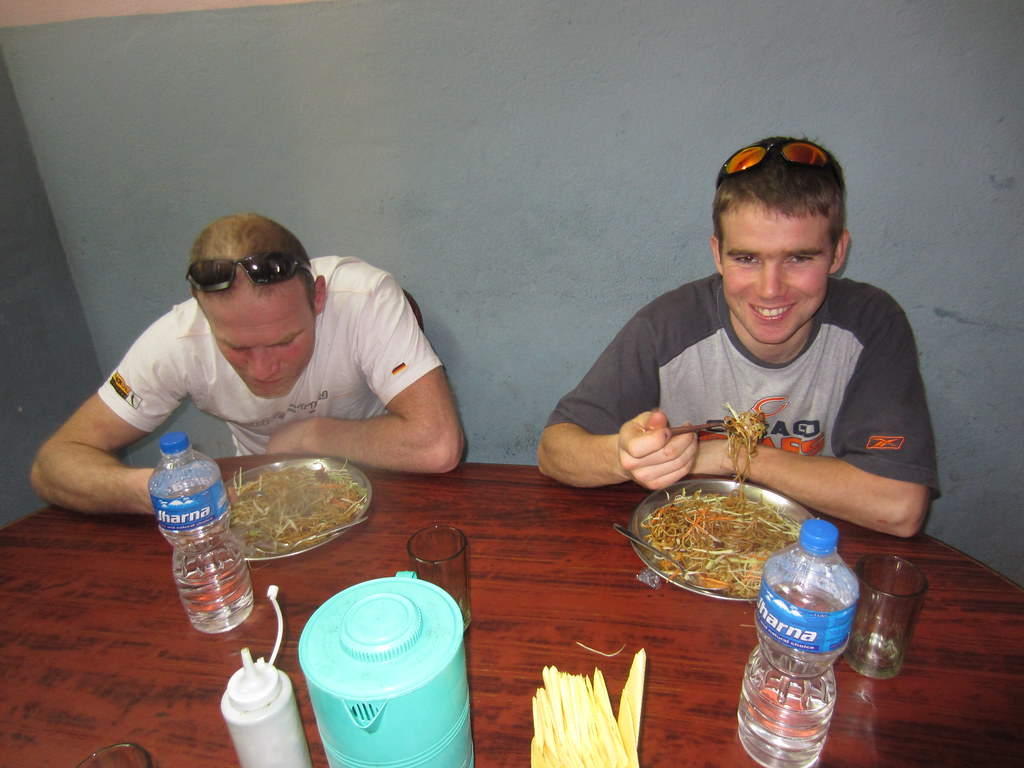
Gareth and Cefin eating their chow mein.
It’s crazy that people that live in Dhading wash their clothing in the river, but what choice do they have? People also would throw their trash in an alley and light it on fire. There is no trash pick-up. It was obvious, I was having a classic case of culture shock.
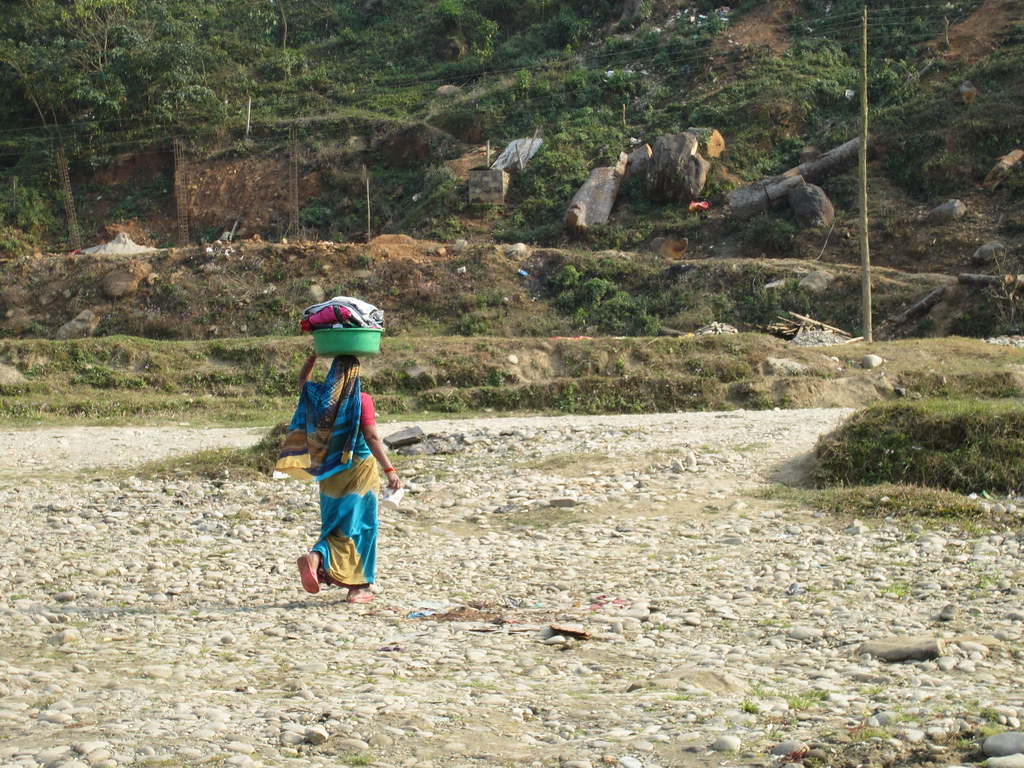
This makes our laundry day look easy
We wandered about town with Gareth and Cefin (our Welsh friends). All the children wear school uniforms with a tie.
Foreigners stand out in the streets.
That day, I felt self conscious. The locals kept looking at me and I couldn’t figure out why… and then it dawned on me. The women do not show their arms or legs and here I was walking around in a skort and a tshirt. I felt so self conscious that I went back to my room and changed into pants.

Neil has an internal compass for the bakeries.
I was having pangs of guilt for being a “rich Westerner.” Lunch was 2 dollars. We got a piece of cake at a bakery that was only $.25. Suddenly I felt bad for the lifestyle I had at home and the things that Westerners generally have. All the simple things we have at home are so easy to take for granted. Things that would be unimaginable luxuries to people in some of the towns in Nepal are things we don’t even think about. It gave me an even greater appreciation for simply being born where I was. However, there was a common theme that came up in my thoughts for the days following. It was not about how awful it would be to live in some of these remote towns with very little amenities, but about the beauty of simplicity. To us, people who have seen a lot and have a lot, we notice when things are missing. These people are happy with what they have. They probably don’t have half the issues that we have. Their kids don’t sit inside playing video games all day and aren’t on miscellaneous drugs for moods and habits. The kids may be dirty with dried up snot on their faces, but they can find joy in simple things. That’s not to say that we can’t, but we forget. Some of the best times I had playing as a kid were in a cardboard box. We’d roll around in it in the backyard. It’s easy to forget.
Back to Dhading. It was a sizable town and we were staying in the middle of it. It was also our first experience with the squat toilets although we were lucky enough to have one in our room. It was also the first cold shower.
The next day, we were underway to the old capital of Nepal.
Next… STAGE 3




